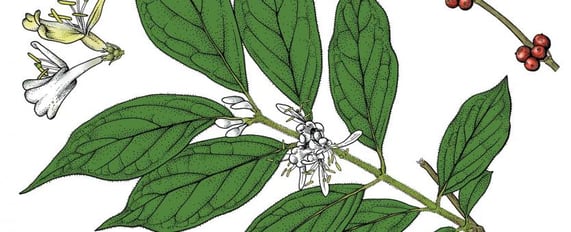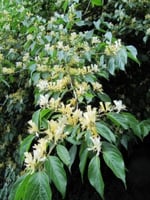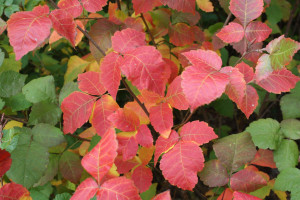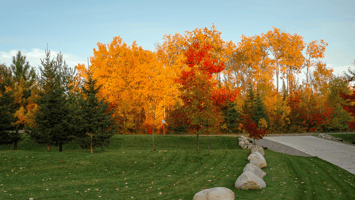In honor of National Invasive Species Week, we are featuring a bush that will soon be leafing out....
Spreading Awareness of Invasive Species
You have probably seen one of the big invaders around your neighborhood and very possibly in your yard. I am talking about bush honeysuckle.
The problem with Bush Honeysuckle
Bush honeysuckle was introduced to the United States int he early 1800s. It will invade a wide variety of natural communities.
The plant has an exceptionally long growing season and because they form a thick understory, they limit how much sunlight reaches the seedlings of native plants and thus inhibit the growth of new plants. They also compete with native plants for moisture and nutrients in the soil. All bush honeysuckles spread from the roots, allowing them to further dominate an area.
Other negatives of Bush Honeysuckle:
- They compete with native plants for pollinators, resulting in fewer seeds set on native species.
- They may also secrete a chemical into the soil that hinders native trees.
- By dominating the understory of a woodland, they change the very structure of the natural community.
- Birds tempted to nest in the sturdy lower branches of bush honeysuckle suffer higher nest predation, being closer to the ground.
- The berries of the plant though abundant, are carbohydrate-rich and do not provide the high-fat content required for the long flights of migrating birds.
Description
Scientific Name
Lonicera maackii (Amur) and Lonicera x bella (bella)
Family
Caprifoliaceae (honeysuckles)
Bush honeysuckles are large, upright, spreading shrubs reaching up to 15–20 feet in height, with flowers that change from white to yellow; juicy red berries; and opposite, simple leaves that green up much earlier than surrounding native vegetation.
Leaves are deciduous, opposite, simple, 1–3 inches long, narrowly oval with a rounded or pointed tip, the margin entire (not toothed or lobed); upper surface green, lower surface pale green, and slightly fuzzy. In late autumn, leaves typically remain green and attached well after the leaves of our native trees and shrubs have fallen.
The bark is grayish brown, tight, with broad ridges and grooves.
Twigs are grayish brown and thornless; the older branches are hollow.
Flowers May–June, fragrant, paired, growing from the leaf axils, tubular, 1 inch long, slender, distinctly 2-lipped, with upper lip having 4 narrow lobes, lower lip with 1 narrow lobe. Petals change from white or pink to yellowish as they age.
Fruits mature in September–October; typically red berries about ¼ inch across, 2–6 seeded, in pairs in the axils of the leaves.
Similar species: Other native and nonnative honeysuckles that occur in Missouri are twining woody vines, not bushes.
Treatment
The most common and effective treatment is to pull up the plant by the roots. this is mainly effective with smaller plants and with moist soil. Using a tool such as a broad bladed hoe can be helpful. The root crown must be removed or the plant will grow back thicker than ever.
Bush Honeysuckle stems can be cut at the base with brush-cutters, chainsaws or hand tools. After cutting, a 20% solution of glyphosate should be applied to the cut stump either by spraying the stump with a low pressure hand-held sprayer or wiping the herbicide not he stump with a sponge applicator to prevent re-sprouting. Once treated, the stump can be removed more easily 6-12 months after treatment.
Other treatments can be used such as prescribed burns or chemical treatment of the base of the bush, but these are more suitable for the professional.
Call the Experts
Contact St. Louis Tree Pros to request a quote to have us manage your invasive species.



